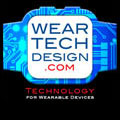Silicon Labs’ CP2615 digital audio bridge simplifies USB-to-I2S connectivity
Silicon Labs’ CP2615 digital audio bridge simplifies USB-to-I2S connectivity: Silicon Labs says its USB-to-I2S bridge chip brings turnkey simplicity to digital audio design. The CP2615 fixed-function audio bridge device transfers digital audio data between the universal serial bus (USB) and integrated inter-IC sound (I2S) serial bus interfaces.
The digital audio bridge simplifies USB-to-I2S connectivity and accelerates time to market for a range of power-sensitive, space-constrained USB audio applications based on the Android, Windows, Linux and Mac operating systems (OS), including headphones, headsets, speakers, MP3 accessories, navigation systems and point of sale (PoS) terminals.
USB audio design can be very challenging, says Silicon Labs, pointing out that developers need a fast, painless way to add USB connectivity to audio accessories. Silicon Labs’ CP2615 digital audio bridge provides drop-in USB-to-I2S connectivity and requires no USB audio knowledge or protocol expertise. Developers can focus on the end application instead of firmware development, says Silicon Labs.
The single-chip CP2615 audio bridge is available in a compact 5.0 x 5.0mm QFN-32 package, is suitable for portable audio applications with limited printed circuit board (PCB) space. The CP2615 includes a USB 2.0 full-speed function controller, USB transceiver, on-chip oscillator, I2S audio interface, I2C control interface and embedded flash memory for storing device configurations. This high level of integration eliminates the need for external components, significantly reducing PCB size and bill of material (BoM) cost, says Silicon Labs.
The CP2615 audio bridge can be used for low- and mid-market headphones requiring a 48-kHz sampling rate. The small form factor device is also suitable for USB dongles for consumers who own high-end headphones that use an analogue jack for audio. Many new smartphone designs are eliminating the analogue headphone jack, offering only one USB connector to support both charging and audio connectivity. As a result, consumers often buy simple, low-cost dongles that interface the 3.5mm analogue jack to a USB-C to Micro USB adapter, to continue using their existing headphones.
Silicon Labs’ Simplicity Studio development environment includes a graphics user interface (GUI) -based Xpress Configurator tool that simplifies USB audio design. Using the Xpress Configurator, developers can configure and customise digital audio applications in three steps: connect the CP2615 bridge device, configure the USB and audio parameters, and, thirdly, program the device. The configurator tool also enables developers to take advantage of Silicon Labs’ flexible factory programming options to speed time to market.
Silicon Labs’ CP2615 digital audio bridge simplifies USB-to-I2S connectivity
http://www.silabs.com



